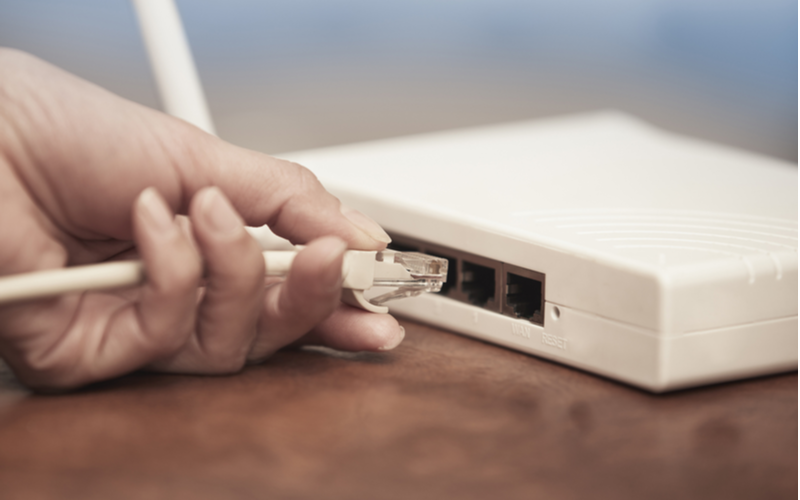
When the computer sends data, the modem first converts the digital signal into a corresponding analog signal, a process called "modulation". Generally, there are only two ports on the modem, one is connected to the telephone line and the other is connected to the network cable, while the router has more ports, usually five, one is connected to the modem, others can be connected to one or more computers at will. The ports of the two are different in shape and number. The appearance of the modem is relatively simple, like a flat cuboid box, which is very small, while the shape of the router is various, including cuboid shape and oval shape, which is larger than the modem the wireless router also has a different number of antenna arrangements. One end of the modem is connected to the telephone line, and the other end is connected to the computer or router, while one end of the router is connected to the modem, and the other end can only be connected to the computer. If you directly use the router to connect the telephone line and the computer, it is impossible to achieve networking. Without the router, the computer can still connect to the Internet through the modem.ĭue to the different functions, the connection methods of the two are also different. With the help of a router, several computers can be connected to the same network cable, but the router is not a necessary device for the computer to access the Internet. With a modem computer, dial-up Internet access can be performed, and a router is a device that helps multiple computers share a network. Different functionsĪ modem is a necessary device for computer networking. Modem vs router: what’s the difference? 1. If it's a computer, you can access the Internet). One end of the modem connects to your internet service provider's infrastructure in a variety of ways, such as a cable, phone line, satellite, or fiber-optic connection the other end is connected to any router (or a computer) through an Ethernet cable, and then you can access the Internet (if you connect to a router, the router generally shares WiFi for each device to access the Internet, or connect the device to the Ethernet interface of the router in wired mode. If it's a DSL (Abbreviation for Digital Subscriber Line, which stands for "Digital Subscriber Line") modem, then connect your phone line to communication. If it is a cable modem, it is connected to the ISP's infrastructure via coaxial cable. This allows your devices to send and receive data over the internet. The router needs to be connected to the Internet through an Ethernet cable, and the modem is responsible for connecting to the Internet.Ī modem is a device that receives an analog signal from your internet service provider (ISP) and translates it into a digital signal that your devices can understand and vice versa. However, if you only have one router, you can't connect to the Internet yet. Servers on the Internet communicate with routers, which direct network signals to corresponding devices on the LAN/private network.
:max_bytes(150000):strip_icc()/d-link-dir-890lr-rear-view-56a6fb043df78cf772914092.jpg)
While the router is connected to the Internet through a modem, the router itself is assigned a globally unique public IP address (generally referred to as the public IP) on the Internet.

Often routers also have multiple ethernet ports, which can be used to connect multiple devices with network cables. Most routers today are WiFi routers, which create a WiFi network to which multiple devices can connect. For example, the telephone line should be equipped with a modem, and the wireless should be through a wireless receiver and transmitter.Ī router is basically used to share a network connection to multiple devices (of course this is a simple description). The remote router is used to connect the remote transmission medium and the corresponding equipment is required. Local routers are used to connect network transmission media, such as optical fibers, coaxial cables, and twisted pairs. Routers are classified into local routers and remote routers.


 0 kommentar(er)
0 kommentar(er)
